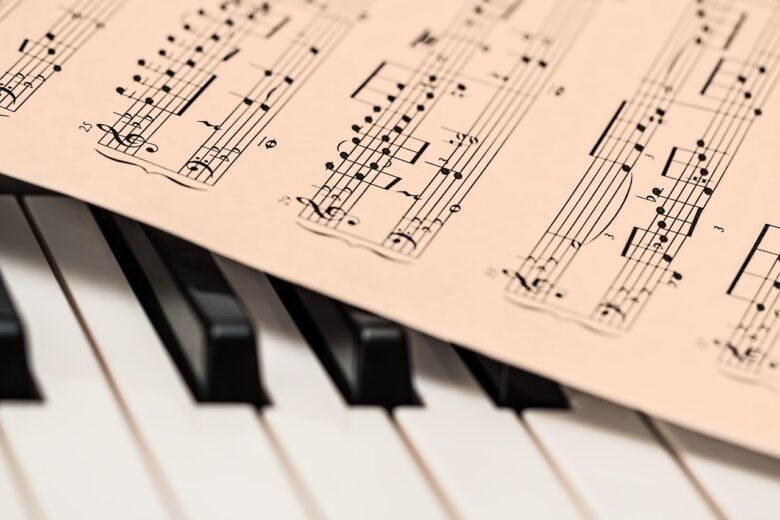If you have ever felt overwhelmed or discouraged about sight reading at the piano, you are not alone.
Many piano students come to me saying their dream is to sit down at the piano and read music of songs they love by sight. Yet relatively few piano learners actually learn to sight read with ease.
Make no mistake: sight reading well is challenging. I wasn’t born a great sight reader. I become good through continuous sight reading practice. Even after I graduated from school, I continued improving my sight reading by playing professionally–especially accompanying for singers and for school plays–and by practicing what I teach as a piano teacher.
In Chapter 6 of my book, “Play PIano: A Learner’s Guide to Playing, Reading, and Creating Music,” I discuss the challenges of sight reading, and reading music in general. I’ll paraphrase a bit here:
What Makes Reading Piano Music So Challenging?
- Overall complexity. Piano music is complex, requiring playing independent parts for both hands simultaneously.
- Lack of strategy. Navigating the complex layers of piano sheet music requires an effective strategy, which many piano learners lack when working on their own.
- Confusion over ear vs. intellect. Reading music is a cerebral activity, very different from listening to music. It often takes sustained focus and concentration before the played notes sound “musical” together.
- Music-reading literacy is uncommon. Few people read music notation relative to the population. This makes it seem harder than it actually is.
Considering these challenges, it’s easy to see why aspiring piano learners often don’t get very far reading music on their own. The lack of a good strategy alone is enough to discourage many learners. Learners often default to what I call “A-to-Z playing,” where they attempt each time to play through their music from start to finish. This approach has its place but limits mastering details. It shouldn’t be the only way piano learners work on their music.
Case in point. Recently, inspired by a student, I worked on the Theme and Variations from Mozart’s Sonata in A Major, K. 331. I grew up loving this piece because my dad played it. I had casually read through the music many times. This time, instead of playing from start to finish, I focused mostly on mastering tricky details. I worked closely, for instance, on the trills in Variation #2 and a fast passage in Variation #5. When I was finally ready to play the whole piece, I played with a greater level of ease than ever before because I had effectively practiced the spots that needed attention.
If I had only played through from the beginning, hoping for the best, I probably would not have made nearly as much progress!
Having a good strategy for reading music accomplishes two things at once: 1) it helps avoid overwhelm from trying to do too much at once, and 2) it leads to making progress.
Ultimately, music reading skill results from working on specific reading and playing skills, such as:
- Note identification of treble and bass clef
- Coordinating playing both hands
- Understanding rhythms and counting while playing
- Following a fingering plan
- Adding other musical aspects on the sheet music, such as pedaling, articulation, and dynamics
These skills and others result from persistently playing and reading music in effective ways. An effective approach is manageable and leads to progress. Progress fuels satisfaction, and satisfaction fuels joy in the piano-learning process.
So yes, gaining sight reading excellence may be challenging. But with the right approach, you can make progress towards that goal without undue strain or frustration.


Great ideas for effective practice – are there some key techniques for playing fluently on “first sight”, or is it essentially a fast/advanced version of normal reading?
Hi Ian,
Pure sight reading is usually about playing the music from start to finish, at or near tempo if possible, whether or not you master the details. The main technique I recommend for getting good at it is to do a lot of it.
One way to do this is to earmark some sheet music–such as a book of pieces–as your sight reading practice music. Devote 5 to 10 minutes each practice session playing through the book (or aim to play one page each session), without worrying about how well you get all the details.
Over time, continually reading new music will make you a better sight reader.
Good luck!